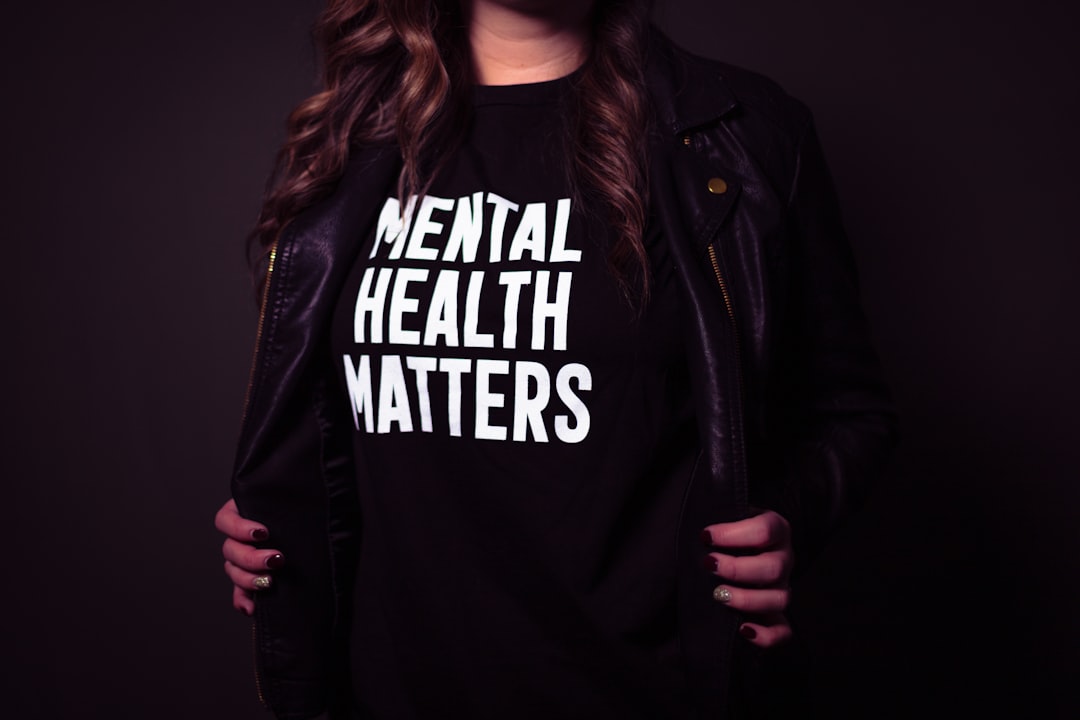

Engage prospects with a scan and streamline customer engagement with FREE QR code marketing tools by Sona – no strings attached!
Create a Free QR CodeFree consultation

No commitment

Engage prospects with a scan and streamline customer engagement with FREE QR code marketing tools by Sona – no strings attached!
Create a Free QR CodeFree consultation

No commitment
In today’s digitally driven world, QR codes have evolved from a novelty to a strategic powerhouse in bridging offline engagement with online action. For mental health service providers, QR codes represent an accessible, efficient, and secure way to collect patient feedback, improve service quality, and foster ongoing patient engagement and reduce anxiety without requiring app downloads or complicated processes.
Many mental health clinics and counseling centers struggle with incomplete feedback, missed opportunities to follow up with high-interest individuals, and the challenge of surfacing critical insights from patient interactions. Traditional methods such as paper surveys or untracked suggestion boxes often yield low participation and leave valuable feedback or upsell opportunities untapped. QR codes address these gaps by creating seamless, mobile-first feedback loops at the point of care.
Increasing industry pressure to capture meaningful input while ensuring privacy and convenience makes seamless digital engagement essential. QR codes enable providers to transform patient input from a difficult task into a frictionless, real-time loop for continuous service improvement and clinical decision support. When combined with analytics and EHR or CRM integrations, they provide a reliable way to connect the dots between interactions, sentiment, and outcomes in a privacy-aware manner.

QR codes bridge the gap between physical touchpoints and digital outcomes, making it easier to achieve real business goals like collecting timely, actionable feedback from patients. They replace slow, analog processes with an at-the-ready digital interaction that can be completed in seconds, even during a brief pause at checkout or while a patient is in the waiting room.
To succeed, you need a simple plan that aligns your QR code deployments with patient journeys and your operational goals. Start where friction is highest: paper forms that go unreturned, email surveys that get ignored, and suggestion boxes that reveal nothing about who is struggling or what needs to be improved. Then, use QR codes as the onramp to HIPAA-compliant forms and resource hubs such as Google Forms that collect data, respect privacy, and route follow-up intelligently.
Modern platforms now automate code management, tie scans to patient profiles, and integrate directly into CRMs or EHRs. See the Sona QR product overview. These capabilities allow providers to track and respond to engagement signals that often remain hidden in legacy systems, turning simple scans into a continuous improvement engine.

Mental health organizations operate in a unique environment where sensitivity, privacy, and timeliness all matter. QR codes help address common barriers that limit the volume and quality of feedback. Research shows their effectiveness in healthcare. They reduce the gap between a moment of insight and the act of sharing it, which is especially important when emotions and experiences are fresh.
QR codes also support operational efficiency. They simplify how clinics collect data, elevate urgent issues faster, and streamline follow-up for individuals who show high interest in support resources or additional services. By replacing analog processes with digital flows, providers can spend less time chasing paperwork and more time improving patient care.
Advanced tools make it possible to update questions on the fly, track participation in real time, and identify gaps immediately. With the right analytics, clinics can prioritize resources efficiently and personalize care experiences based on the needs signaled through scans.

Choosing the right QR format ensures that your patient experiences are smooth, private, and effective. For mental health providers, the goal is to minimize friction while maximizing clarity and security. The format you choose should reflect the action you want patients to take and the sensitivity of the information involved.
Dynamic QR codes are especially useful for clinical settings since they can be updated without reprinting materials and provide analytics for continuous improvement. Static codes work well for simple, unchanging destinations that do not require tracking. Most clinics benefit from a mix of both.
Dynamic QR codes give clinics control to update destinations, tweak survey wording, and A/B test resources. They also capture scan metadata such as time and device type, which helps you understand when and how patients engage.

Growth in mental health services does not only mean more appointments. It also includes better retention, improved participation in programs, and stronger alignment between patient needs and available services. QR codes help you find and activate these opportunities in real-world touchpoints where patient attention is highest.
Look at moments when patients are receptive to guidance or have vital feedback to share. In these moments, even a small barrier can derail participation. QR codes minimize friction and give patients a safe, fast path to action.
By embedding unique QR codes at each high-impact touchpoint, clinics gather richer data and transform it into timely decisions. Staff can identify patients who might benefit from additional services, detect repeating concerns across locations, and iterate quickly without costly reprints.

QR codes are versatile enough to support both clinical and operational objectives. The key is to match each use case to a clear outcome and integrate it with the systems that power your workflows.
These examples show how QR codes turn patient interactions into measurable improvements:
By prioritizing convenience and privacy, these use cases increase participation and produce insights that directly inform service adjustments, staffing decisions, and program development.
Every QR scan is a signal of intent. In mental health settings, these signals can indicate curiosity about a program, readiness to book a session, or a need for more support. If you capture and classify these signals, you can tailor follow-ups that are timely, respectful, and relevant to each individual’s journey. See intent-driven retargeting.
Segmentation starts with unique QR codes for each touchpoint. A scan in the waiting room means something different than a scan on a discharge handout or a community poster. With consent and proper safeguards, these signals can feed CRM or EHR workflows to trigger educational content, appointment reminders, or outreach from care coordinators.
Clinics using robust QR analytics can build privacy-respecting lists that inform patient engagement and operational planning. The result is better continuity of care and more effective use of staff time.
Most mental health organizations rely on a mix of channels: printed pamphlets, social media, community events, and referral networks. QR codes unify this mix by turning every offline impression into a digital entry point. This brings measurement to previously opaque channels and gives patients an immediate next action. For healthcare, see modern QR marketing.
To get the most from your multi-channel plan, create a consistent experience across environments. Align messaging, use a recognizable QR visual frame, and make sure the destination pages are mobile-friendly. When scans roll into a central dashboard, you can see which channels are truly driving engagement and adjust in real time.
This approach captures engagement that previously remained invisible, creating a cohesive experience that supports patients from awareness through care and post-care resources.
Launching a QR program in a clinical environment requires clarity of purpose, thoughtful design, and a privacy-first mindset. The following steps turn an idea into a repeatable process that scales across locations and programs. Use each step to confirm alignment with clinical priorities, then iterate based on real-world results.
Before you start, confirm that your destination pages and forms are accessible, mobile optimized, and aligned with HIPAA requirements. Ensure your team understands what data is collected, how it is stored, and who will act on it. Clear ownership is as important as a clear QR code.
Define the single outcome you want from the scan, then work backward. Examples include capturing post-session feedback within two hours, gathering input after group sessions, or surfacing resource interest for post-discharge patients. Start with one or two high-impact scenarios to validate your process quickly.
Decide whether a static or dynamic code best fits your needs. Static codes are fine for a permanent resource that does not need analytics. Dynamic codes allow you to change destinations, add UTMs, and view detailed scan data without reprinting.
Design for clarity and scannability. Use a simple frame, adequate white space, and a short, benefit-focused CTA such as “Scan for quick, private feedback.” Include your logo or brand colors sparingly so the code remains readable. Test on various devices, distances, and lighting conditions before go-live. See QR codes in marketing for design tips.
Place QR codes where patients already look. Think check-in counters, therapy room exits, discharge packets, and group session materials. For outreach, include codes on community posters, partner referrals, and event handouts. Match the code size and CTA to the environment, such as larger codes for posters and smaller codes for cards.
Use analytics to understand which placements, times, and messages perform best. Monitor participation rates, completion rates, and follow-through on suggested resources. Run small experiments such as changing the CTA or repositioning a code to improve performance.
Relying solely on raw response counts is no longer enough. Effective QR analytics let mental health providers connect the dots between engagement and outcomes. The goal is not only to know who scanned, but to understand what that scan means for care quality, program uptake, and revenue stability. For strategic context, read Sona revenue attribution.
A strong analytics framework includes tracking scans by time, device, and channel, along with conversion metrics such as completed surveys and requested callbacks. It also includes a plan for responding to the insights you uncover. For example, if a specific location yields low satisfaction scores, you can investigate staffing, scheduling, or facility conditions and address the issue quickly.
Sona QR captures real-world engagement from scans, while Sona helps attribute outcomes by connecting scan events to downstream actions. Together they turn QR codes into a performance channel that informs care planning, marketing investments, and revenue forecasting.
Scaling QR success is about standardizing what works, removing friction for staff and patients, and using automation wisely. Small refinements in CTA language, placement, or follow-up can produce significant gains in participation and program utilization.
Select tips that align with your environment and goals. The most effective clinics pair clear operational ownership with a lightweight testing cadence. Share wins with your team to sustain momentum and encourage creative deployment ideas.
With consistent execution and a clear reporting rhythm, QR programs evolve from one-off experiments into a reliable lever for patient experience, operational efficiency, and sustainable growth.
QR codes have advanced from simple shortcuts to vital tools in the patient-provider relationship for mental health service organizations. Each scan is an opportunity to capture insights, detect needs, and guide patients to the next best step in their care. When paired with thoughtful design, secure data practices, and integrated analytics, QR codes transform feedback collection from an administrative chore into a powerful, continuous improvement loop.
Adopting QR codes within mental health organizations addresses persistent pain points such as low participation, anonymous engagement, and delayed follow-up. The result is a system where every touchpoint generates actionable signals: staff can respond faster, programs can adapt sooner, and patients feel heard. With platforms like Sona QR for code management and Sona.com for attribution, clinics can connect scans to outcomes and invest with confidence in what works.
Start small, measure well, and iterate. A few carefully placed QR codes with clear CTAs can elevate participation, reveal hidden opportunities, and strengthen the bond between your organization and the communities you serve. Start creating QR codes for free.
QR codes have transformed mental health service providers from relying on traditional feedback methods to embracing dynamic, real-time client insights. Whether it’s gathering valuable feedback, enhancing patient engagement, or streamlining service improvements, QR codes replace cumbersome paper surveys with instant, mobile-friendly interactions that capture meaningful data to elevate care quality and client satisfaction. Imagine knowing exactly which touchpoints resonate with clients—and being able to respond swiftly to improve their experience.
With Sona QR, you can effortlessly create dynamic, trackable QR codes that update instantly without reprinting, link every scan to actionable feedback, and monitor engagement trends to refine your services continuously. No missed opportunities, just smarter, client-centered care that drives loyalty and growth.
Start for free with Sona QR today and transform every scan into a powerful tool for enhancing mental health outcomes and client trust.
Mental health service providers include clinics, counseling centers, group therapy programs, and community outreach organizations.
Choose a provider based on your specific needs, such as therapy type, program availability, and the provider's ability to offer personalized care and timely follow-up.
You can find providers through community centers, clinics, referral networks, event flyers, and online resource hubs linked via QR codes.
They offer counseling, group therapy, resource navigation, crisis support, program participation, and follow-up care.
QR codes provide immediate, anonymous access to HIPAA-compliant feedback forms and resource hubs without app downloads or complicated processes.
QR codes enable quick, mobile-first feedback, improve privacy, reduce anxiety, increase participation rates, and streamline follow-up and resource access.
They use QR codes integrated with analytics, CRM, and EHR systems to collect real-time feedback, track engagement, personalize care, and automate follow-ups.
Affordable services can be found by engaging with local clinics, community programs, and resource hubs promoted through QR codes and outreach events.
Providers typically include licensed therapists, counselors, and clinicians trained to offer mental health support and compliant with privacy regulations.
If you experience ongoing emotional distress, anxiety, or difficulty coping, timely feedback through QR-enabled surveys and resource access can guide you to appropriate care.
Use Sona QR's trackable codes to improve customer acquisition and engagement today.
Create Your FREE Trackable QR Code in SecondsJoin results-focused teams combining Sona Platform automation with advanced Google Ads strategies to scale lead generation

Connect your existing CRM

Free Account Enrichment

No setup fees
No commitment required

Free consultation

Get a custom Google Ads roadmap for your business






Launch campaigns that generate qualified leads in 30 days or less.
